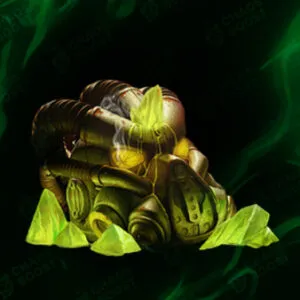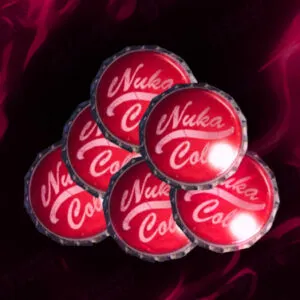A Ghoul’s Day in Appalachia: My Adventures with the Fallout 76 Ghoul Within Update
I’ve been back in Fallout 76 for a bit after a long hiatus and I wanted to see what the new Ghoul Within did to the Wasteland. My journey started like any other: rummaging through abandoned buildings, sprinting past feral ghouls, and trying out S.P.E.C.I.A.L. builds. Before long I ran into a group of survivors talking about a “radiation specialist” who had a solution to a problem I’d been having. I was intrigued by the rumors of ghoulification so I decided to go for it, not fully prepared for how much my character would change.
Stepping into this new story felt like a big leap of faith. The promise of permanent ghoul features, legendary perk cards and hidden interactions seemed to change the daily quest loop. I was especially curious about how the game would handle dialogue for a new ghoul and how it would affect interactions with NPC factions. Every time I heard “ghoul abilities” and “increased radiation resistance” I felt a sense of excitement. It reminded me that Fallout 76 is still evolving and offering content beyond what we thought at launch.
My plan was simple: get the radiated ore, do the transformation and then see if my new ghoul body could shrug off nukes and tear through Super Mutants. The next few days had me running to the edges of the map to find hidden pockets of irradiated resources and fighting off well armed raiders. By the time I got back to base I was ready to test the limits of ghoul life.
First Steps into Ghoulification
Ghoulification in Fallout 76 has always been a topic of interest for many Vault Dwellers. The Ghoul Within update brings a storyline that allows you to become a full ghoul, with decaying features and unique abilities. My first experience with this was in a remote area where an NPC scientist guided me through a radioactive ore extraction. I was tense and had doubts about the safety of the procedure but the promise of legendary ghoul-like resilience was too great so I went for it.
Below is a breakdown of the steps I went through during ghoulification along with some approximate resource requirements. Each step was crucial in making the transformation permanent:
| Ghoulification Phase | Location | Approximate Resources | Risk Factor (1-10) |
|---|---|---|---|
| Extract Radioactive Ore | Abandoned Mine Shaft | 10+ units of ore | 7 |
| Locate NPC Scientist | Hidden Cabin near Radiant Hills | 50+ Caps for bribe | 5 |
| Undergo Ghoul Serum Injection | Makeshift Medical Lab | 1 specialized serum | 8 |
| Post-Transformation Recovery | Secure Camp Site | 20 Stimpaks, 5 RadAway | 4 |
Each step had its own complications that could have derailed the whole process. The ore extraction had Mole Miners to fight and rad-soaked water to avoid. The encounter with the NPC scientist was tense because bandits roamed the hills and would steal valuable materials. Even the injection itself felt like a gamble: lying on a rickety cot while an unnamed ghoul doctor messed with advanced chems didn’t inspire confidence.
Finishing this journey turned my character into a noseless, rotting skin and a second health bar whenever I took in enough rads. I was excited to see how my new abilities would play out in combat. Adjusting to the transformation meant learning how to manage my Endurance points and reorganize multiple perk cards. At first I was uneasy with the changes but soon I found a new way to experience Appalachia as a ghoul.
Perk Cards and the Art of Radiated Survival
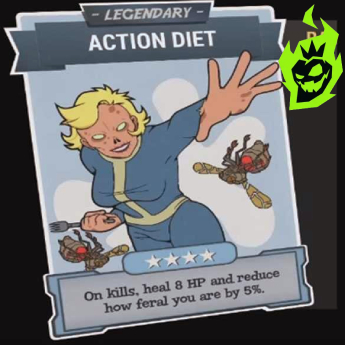
As a ghoul, perk cards change, especially in the Endurance category. My first day of exploration after the transformation taught me that carrying heavy weapons feels different and rad-based perks are even more important. I wanted to check out the new perk types so I went to Radiant Hills to find a vendor that sells cards for mutated travelers. The city had hidden corners with new NPCs that welcomed my unusual appearance and others that didn’t.
Below is a table of some perk cards that stood out to me, specifically for life as a ghoul. The table includes perk card level requirements, effect details and how they interact with the sanity meter introduced in the Ghoul Within update:
| Perk Card | Level Req. | Effect | Synergy with Sanity |
|---|---|---|---|
| Irradiated Might | 20 | Increased melee damage the more rads are present | Depletes sanity slowly if rads go too high |
| Feral Heart | 30 | Grants extra AP regeneration while under 50% sanity | Rapid sanity loss can lead to combat frenzies |
| Glowing Fortitude | 40 | Adds a second health bar fueled by radiation | Moderately stabilizes sanity at mid-rad levels |
| Wasteland Tolerance | 25 | Increases rad resistance while lowering maximum HP | Minor sanity boost when rads are moderate |
Investing in these perks changed the way I approached combat and healing. My usual high-Strength, high-Agility build required adjustments since my new ghoul perks demanded more Endurance. The constant need for a balanced rad level meant I had to measure how often I took RadAway. On the other hand I could skip some stimpaks if I timed my rad management well. Being a “walking radiation absorber” was a novelty and it opened up new ways to handle boss fights or even daily events.
My time in Radiant Hills also showed me a weird side of the Ghoul Within update: the sanity meter. Going too far into feral mode made me black out or become more aggressive which affected some dialogue choices and faction interactions. Watching that meter climb and fall during intense battles was a new layer of strategy I never expected from Fallout 76. By the end of my perk card experimentation I was determined to push the limits of this new system as I headed towards the Gleaming Depths raid.
Venturing into the Gleaming Depths
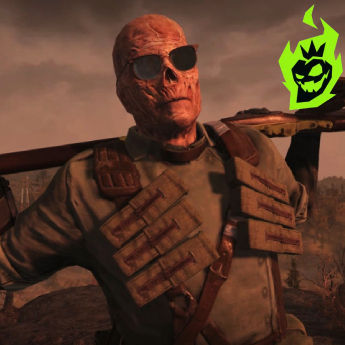
After I secured my spot in the new ghoul community I turned my attention to an advanced Fallout 76 activity called the Gleaming Depths event. Word on the radio was that a giant Ultracite entity was lurking in an abandoned facility. Since being a ghoul allegedly gave me extra resilience I felt bold enough to gather a group of fellow explorers. We met outside the facility’s blast doors, each of us with a mix of ballistic gear, energy weapons and a fair amount of Stimpaks for the radioactive hazards.
Below is a table of the stages we encountered in the Gleaming Depths, along with recommended gear and approximate difficulty levels:
| Stage | Recommended Gear | Approx. Difficulty (1-10) | Key Threats |
|---|---|---|---|
| Surface Breach | Mid-tier armor (Leather/Combat) | 6 | Hostile Mole Miners |
| Energy Core Activation | Heavy gun or fast reload build | 7 | Laser turrets, rad bursts |
| Ultra-Guardian Showdown | Power armor + ballistic weapons | 9 | Giant Ultracite serpent boss |
| Escape and Debrief | High rad resistance perks | 5 | Collapsing tunnels |
The first step was to force our way through waves of Mole Miners that guarded the perimeter like territorial animals. My irradiated abilities let me charge in with an auto-axe, shrugging off stray bullets while dealing massive damage. Once the area was clear we found that the deeper tunnels had been flooded with toxic gas vents. We had to pace ourselves, toggling between stealth and all-out assault whenever an enemy patrol spotted us.
After a while we faced the Ultra-Guardian, a giant serpent-shaped anomaly that clung to the walls and spewed poison. Seeing its coiled body in the dimly lit facility was one of the most memorable moments I had in Fallout 76. We shot it with plasma rifles, shotguns and even a few mini-nukes while trying to avoid the acid that ate through armor in seconds. Victory felt great and we were rewarded with glowing trophies, legendary items and new insight into the power of being a ghoul.
Adapting to Life Among the Ghouls
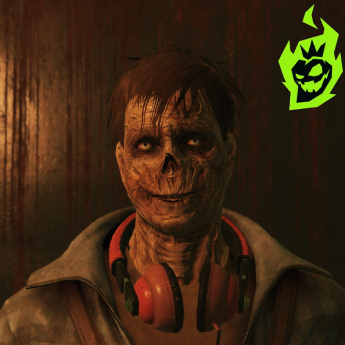
As I emerged from the facility with my new gear I realized that being a ghoul was only just beginning. Others in my camp asked: Do other Vault Dwellers see me differently? Would certain factions like the Brotherhood of Steel ever trust a ghoul in their ranks? I heard rumors of a full disguise for ghouls that wanted to appear human in main story quests. That option allowed me to bypass suspicious guards that would otherwise slam the door in my face.
My experiences eventually led me to a short list of guidelines for living as a ghoul in Appalachia:
- Balance your rad exposure to keep that second health bar active but avoid going too far into feral territory.
- Carry extra chems to adjust sanity levels during long fights or stressful encounters.
- Monitor NPC reactions when traveling without a disguise, especially in Brotherhood HQ or other human-centric areas.
- Check your perk card setup whenever you switch between high-rad and low-rad builds.
- Remember that some NPCs offer new dialogue options to ghouls which can lead to new quests or hidden rewards.
This small list proved crucial once I rejoined my regular group of adventurers. Some folks found my ghoul approach interesting and wanted to learn more about the perks. Others kept a polite distance, worried I would eventually go feral. That range of reactions reminded me that being a ghoul was not just about raw combat advantage; it also changed the social landscape of Appalachia.
For me the Ghoul Within update is one of the most interesting additions to Fallout 76. The transformation allows for more rad experimentation and perk synergy. Plus the story gives us a glimpse into the ghoul population that was previously overlooked in previous updates. With high stakes events like Gleaming Depths the story gives us a new perspective on the Wasteland and shows that a game we once thought was done can still surprise us.

